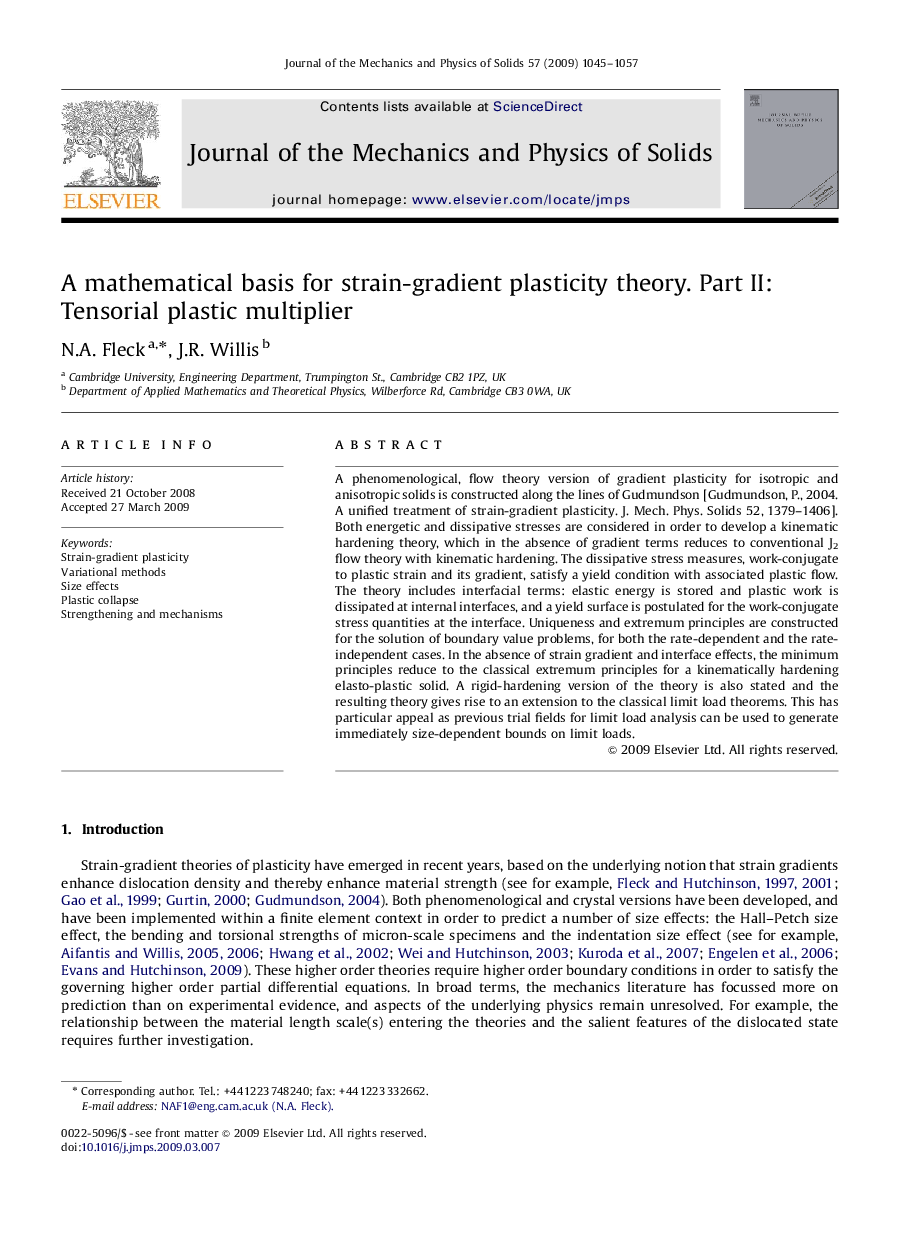| Article ID | Journal | Published Year | Pages | File Type |
|---|---|---|---|---|
| 797398 | Journal of the Mechanics and Physics of Solids | 2009 | 13 Pages |
A phenomenological, flow theory version of gradient plasticity for isotropic and anisotropic solids is constructed along the lines of Gudmundson [Gudmundson, P., 2004. A unified treatment of strain-gradient plasticity. J. Mech. Phys. Solids 52, 1379–1406]. Both energetic and dissipative stresses are considered in order to develop a kinematic hardening theory, which in the absence of gradient terms reduces to conventional J2 flow theory with kinematic hardening. The dissipative stress measures, work-conjugate to plastic strain and its gradient, satisfy a yield condition with associated plastic flow. The theory includes interfacial terms: elastic energy is stored and plastic work is dissipated at internal interfaces, and a yield surface is postulated for the work-conjugate stress quantities at the interface. Uniqueness and extremum principles are constructed for the solution of boundary value problems, for both the rate-dependent and the rate-independent cases. In the absence of strain gradient and interface effects, the minimum principles reduce to the classical extremum principles for a kinematically hardening elasto-plastic solid. A rigid-hardening version of the theory is also stated and the resulting theory gives rise to an extension to the classical limit load theorems. This has particular appeal as previous trial fields for limit load analysis can be used to generate immediately size-dependent bounds on limit loads.
